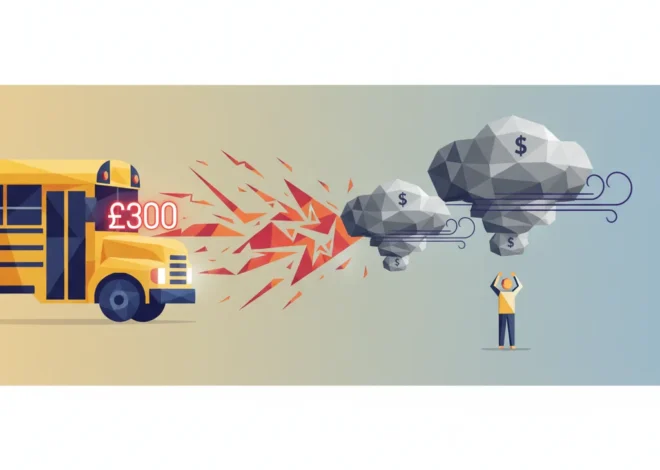
Infrastructure’s Blind Spot: Why We’re Asking the Wrong Questions About a $2.6 Trillion Problem
Every few years, a headline-grabbing figure jolts the public consciousness: America’s infrastructure is crumbling, and the price tag to fix it runs into the trillions. The American Society of Civil Engineers (ASCE) recently gave U.S. infrastructure a C- grade, estimating a staggering $2.59 trillion investment gap over the next decade. The immediate, almost instinctual, response from policymakers and the public alike is a call to action: “We need to build more! We need more funding!”
This narrative, centered on supply and funding deficits, dominates the discourse. It fuels political campaigns, shapes massive legislation, and directs the flow of capital in the stock market towards construction giants and materials suppliers. We are obsessed with the “what” and the “how much.” What new bridges, roads, and power plants do we need? How much will it cost to build them?
But what if this is the wrong frame entirely? In a thought-provoking letter to the Financial Times, Richard G Little, Editor of the Journal of Critical Infrastructure Policy, points out a fundamental flaw in this approach. He argues that the truly “knottier question” isn’t about how to meet ever-increasing demand, but rather how to manage that demand in the first place. This subtle but profound shift in perspective moves the focus from brute-force construction to intelligent system optimization, unlocking a new universe of challenges and opportunities for the global economy, investors, and financial innovators.
The Trillion-Dollar Allure of “Shovel-Ready” Solutions
The traditional approach to infrastructure planning is deeply ingrained in our economic and political systems. When a highway is congested, the default solution is to add more lanes. When a city faces power shortages on hot summer days, the answer is to build another power plant. This supply-side model is appealing for several reasons:
- Visibility and Political Appeal: A new bridge or a gleaming high-speed rail line is a tangible, photogenic symbol of progress. Politicians can cut ribbons and point to concrete achievements, which plays far better in an election cycle than the invisible success of a 15% reduction in peak energy consumption.
- Economic Stimulus: Large-scale construction projects create thousands of jobs in the short term, boosting local economies and driving revenue for engineering firms, construction companies, and raw material suppliers. This makes them a powerful tool for governments looking to stimulate economic activity.
- Familiar Investing Models: The world of finance and banking is well-equipped to handle these projects. Project finance for a toll road or a power station is a well-understood discipline with decades of historical data, making it relatively straightforward to model risk and return for investors.
However, this obsession with building more has significant downsides. It is incredibly capital-intensive, slow, and often environmentally damaging. Furthermore, it can lead to a phenomenon known as “induced demand,” where adding new capacity simply encourages more use, returning the system to its previous state of congestion or strain. Adding lanes to a freeway can, paradoxically, lead to worse traffic in the long run as more people choose to drive. This cycle of building to meet peak demand is not only financially unsustainable but also fails to address the root cause of the strain.
The Link Room Strategy: Transforming Corporate Dead Space into High-Value Assets
The Paradigm Shift: From Supply-Side Spending to Demand-Side Strategy
Demand-side management (DSM) flips the script. Instead of asking, “How can we supply more?” it asks, “How can we use what we have more efficiently and shape demand to fit within our existing capacity?” This approach leverages technology, data, and behavioral economics to create a more resilient, efficient, and cost-effective infrastructure ecosystem.
The differences between the two approaches are stark. Consider this comparison across key infrastructure sectors:
| Infrastructure Sector | Traditional Supply-Side Solution | Demand-Side Management (DSM) Solution |
|---|---|---|
| Transportation | Build new highways; add more lanes. | Implement dynamic congestion pricing; optimize traffic signals with AI; promote remote work and public transit. |
| Energy | Construct new power plants to meet peak load. | Deploy smart grids with dynamic pricing to incentivize off-peak usage; subsidize energy-efficient appliances; promote home battery storage. |
| Water | Build new dams, reservoirs, and desalination plants. | Implement tiered pricing to discourage waste; use smart meters to detect leaks in real-time; promote drought-resistant landscaping. |
As the table illustrates, the DSM approach is less about pouring concrete and more about deploying intelligent systems. It’s a transition from a 20th-century mindset of physical engineering to a 21st-century one of systems engineering, data analytics, and financial technology.
New Frontiers for Finance, Investing, and Technology
This pivot from supply to demand doesn’t just change how we build; it fundamentally changes how we finance, invest in, and profit from infrastructure. It creates an entirely new asset class and a new set of market leaders.
Rethinking Infrastructure Investing:
Traditional infrastructure funds focus on large, tangible assets with predictable, long-term cash flows, like toll roads or airports. A demand-side strategy opens up a new universe of investment opportunities in the technology layer that manages these assets. This includes:
- Smart Grid Technology: Companies developing software and hardware for real-time energy pricing and grid optimization.
- IoT and Sensor Networks: Firms that build the sensors for monitoring water pipeline integrity, traffic flow, and energy consumption.
- Data Analytics and AI: Platforms that process vast amounts of data to predict demand, optimize asset performance, and guide policy.
- Mobility as a Service (MaaS): Companies that integrate various forms of transport services into a single, on-demand mobility service, reducing the need for private car ownership.
These investments often look more like venture capital or tech-stock plays than traditional infrastructure deals. They are less capital-intensive, more scalable, and carry a different risk profile. This requires a new mindset from the banking and investment communities, which must develop novel financing models for these software- and data-centric projects.
Argentina's High-Stakes Bet: Milei's Election Win Greenlights Radical Economic "Shock Therapy"
The Role of Fintech and Blockchain:
The complexity of demand management is a perfect breeding ground for innovation in financial technology. Dynamic pricing systems for electricity or road usage are essentially high-frequency trading platforms for resources. They require secure, instantaneous micro-transactions and sophisticated algorithms to function.
This is where technologies like blockchain could play a transformative role. Imagine a decentralized energy grid where households with solar panels can sell excess energy directly to their neighbors in real-time via a secure, automated ledger. A 2022 report from the World Economic Forum highlighted how blockchain could enhance transparency and efficiency in energy markets. Similarly, blockchain could be used to create transparent, tradable credits for water conservation or for using off-peak transportation, creating new financial instruments that directly incentivize efficiency.
Real-World Success Stories
This is not a theoretical exercise. Cities and countries around the world are already proving the power of demand management.
- Singapore: The city-state’s Electronic Road Pricing (ERP) system, first implemented in 1998, is a global pioneer. By using electronic gantries to charge motorists more for driving in congested areas during peak hours, Singapore has successfully managed traffic flow for decades, avoiding the gridlock that plagues many other major cities.
- London: The London Congestion Charge, introduced in 2003, has been credited with reducing traffic and encouraging a shift to public transport. It’s a clear example of using price as a tool to shape transportation demand.
- California: During severe droughts, many California water utilities have implemented aggressive DSM programs, including tiered pricing that charges heavy users exponentially more, combined with smart metering technology. These measures have proven highly effective at curbing water consumption without the massive cost and environmental impact of building new dams.
Beyond the Paycheck: A Tech Investor's Guide to Building a Recession-Proof Career
Conclusion: Asking the Right Question
The multi-trillion-dollar infrastructure gap is real, and significant investment is undoubtedly needed to repair and modernize our foundational systems. However, by focusing exclusively on the supply side, we risk pouring trillions of dollars into a leaky bucket, building expensive new assets while failing to optimize the ones we already have.
The “knottier question” of demand management, as Richard G Little termed it, is the critical challenge of our time. It forces us to be smarter, more efficient, and more creative. For investors, it signals a shift from a market dominated by industrial behemoths to one driven by agile tech innovators. For business leaders, it means adapting to a future where resource costs are dynamic and efficiency is paramount. And for policymakers, it requires the political courage to embrace complex, data-driven solutions over simple, shovel-ready projects.
The most valuable infrastructure of the 21st century won’t just be made of steel and concrete. It will be built on a foundation of data, powered by intelligent software, and financed by a new generation of forward-thinking investors who understand that the smartest way to solve a problem is often to reframe the question.


